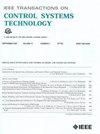Trajectory Planning of Radio Source Tracking for the New Feed Cabin Mechanism in FAST
IF 3.9
2区 计算机科学
Q1 AUTOMATION & CONTROL SYSTEMS
引用次数: 0
Abstract
To reduce the weight of the feed cabin and increase the observation range of the five-hundred-meter aperture spherical radio telescope (FAST) for reaching the galactic center, a new feed cabin mechanism (NFCM) with a lightweight nine-cable-driven structure has recently been proposed, which theoretically has satisfactory performance for the forthcoming upgrade of FAST. However, trajectory planning suitable for the NFCM is still lacking when tracking radio sources. Consequently, an optimal trajectory planning method is proposed in this article that can achieve smooth motion of the NFCM within a specific period by considering the observation requirements of FAST. Based on the motion analysis for radio source tracking, the trajectory relationship between the radio source and the NFCM is deduced by considering the rotation of the Earth. Then, based on the quintic B-spline, the observation-related cable force characteristics are designed as the objective function to obtain the optimal trajectory of the NFCM, where multiple constraints in different spaces are uniformly mapped to the observation space for optimization complexity reduction by using the graphic-based method. The simulation results show that the optimized observation trajectory of the NFCM using constraint mapping is smooth enough to track the radio source, which brings an acceptable continuity of cable length variation for effectively reducing the potential mechanical shock, and the cable force characteristics with constraints are also well guaranteed. In addition, the effectiveness of constraints, the optimality of cable force characteristics, and the feasibility of the planned trajectory are further demonstrated in simulations.FAST新型馈源座舱机构的射电源跟踪轨迹规划
为了减轻馈电舱的重量,提高500米口径球面射电望远镜(FAST)到达银河系中心的观测距离,提出了一种新型馈电舱机构(NFCM),该机构采用轻量化的九缆驱动结构,理论上对FAST即将进行的升级具有满意的性能。然而,在跟踪射电源时,仍然缺乏适合NFCM的轨迹规划。因此,本文提出了一种考虑FAST观测要求,使NFCM在特定周期内实现平滑运动的最优轨迹规划方法。在对射电源跟踪进行运动分析的基础上,推导了考虑地球自转的射电源与NFCM之间的轨迹关系。然后,以五次b样条为基础,设计观测相关索力特性作为目标函数,得到NFCM的最优轨迹,将不同空间的多个约束统一映射到观测空间,采用基于图形化的方法降低优化复杂度。仿真结果表明,利用约束映射优化后的NFCM观测轨迹足够平滑,能够跟踪射电源,使电缆长度变化具有良好的连续性,有效地降低了潜在的机械冲击,并且在约束条件下电缆受力特性也得到了很好的保证。仿真结果进一步验证了约束条件的有效性、索力特性的最优性以及规划轨迹的可行性。
本文章由计算机程序翻译,如有差异,请以英文原文为准。
求助全文
约1分钟内获得全文
求助全文
来源期刊

IEEE Transactions on Control Systems Technology
工程技术-工程:电子与电气
CiteScore
10.70
自引率
2.10%
发文量
218
审稿时长
6.7 months
期刊介绍:
The IEEE Transactions on Control Systems Technology publishes high quality technical papers on technological advances in control engineering. The word technology is from the Greek technologia. The modern meaning is a scientific method to achieve a practical purpose. Control Systems Technology includes all aspects of control engineering needed to implement practical control systems, from analysis and design, through simulation and hardware. A primary purpose of the IEEE Transactions on Control Systems Technology is to have an archival publication which will bridge the gap between theory and practice. Papers are published in the IEEE Transactions on Control System Technology which disclose significant new knowledge, exploratory developments, or practical applications in all aspects of technology needed to implement control systems, from analysis and design through simulation, and hardware.
 求助内容:
求助内容: 应助结果提醒方式:
应助结果提醒方式:


